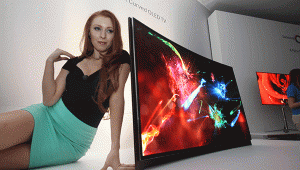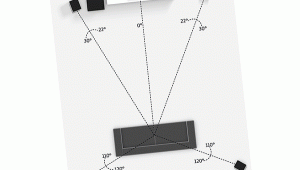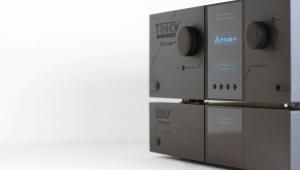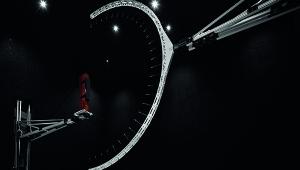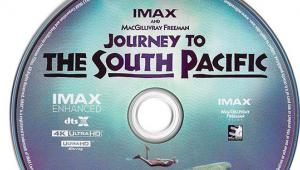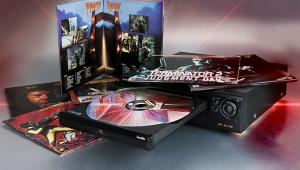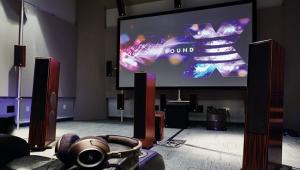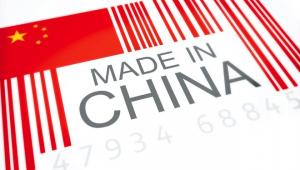Is it time for home cinema to Kiss and make up?

We’ve all been there. Grovelled around the back of an AV system looking for the plug that needs jiggling in its socket to restore a mysteriously lost connection. We’ve trodden on a plug, and broken it, and so made an expensive cable useless; or broken the little plastic lock leaf on the RJ45 plug at the end of a carefully-laid Ethernet network cable. Worse still, we’ve tripped over a lead, wrenched the plug and broken the socket in a pricey piece of gear. And how many smartphones and tablets have been wrecked by someone pushing the USB connector home the wrong way round? What a wonderful world it would be if connections no long relied on plugs.
And Wi-Fi is not the magic bullet; a recent report from Arris Consumer Entertainment Index showed that two-thirds of people using Wi-Fi at home have problems with it. So imagine a piece of hardware with a hidden microchip that talks by radio waves to a matching chip in another slab of kit. Just put them together and they connect.
This is how wireless chargers already work and it’s how NFC (Near Field Communications) handles contactless payments and Bluetooth pairing. But NFC is very slow, handling only a few hundred kilobits per second. You’d die of old age before a movie got transferred. This is where Kiss technology – from US company Keyssa – comes in. Think of it as NFC with a blistering transfer speed of 6 Gigabits a second. That’s faster than the USB 3.0 wire standard (5Gbps) and means an HD movie file can squirt between devices in a few seconds.
Dream connectionNormally Kiss would sound too good to be true; a pipedream from a start-up company touting for dollars to try and make an armchair idea work. But Keyssa is not your usual bunch of techie hopefuls. The Californian company, formerly Waveconnex, was founded in 2009 and is run by Eric Almgren, who co-founded Silicon Image, the people behind the HDMI standard. Chairman Tony Fadell previously founded Nest, known for remote security and home automation, and was before that a key player at Apple on iPod and iPhone design. Keyssa is backed to the tune of $47million from biggies including Dolby, Intel and Samsung.
Steve Venuti is the new VP Strategic Solutions. Before that he was President of HDMI Licensing, the tough body which controls the HDMI standard. So the people who made HDMI ubiquitous are now jumping ship for Keyssa.
Venuti recently told HCC how and why he made the move: 'HDMI Licensing won a second Emmy Engineering Award for the HDMI interface, which was wonderful, but when they introduced me as the "President of that legacy connector company" I thought "It’s time to move on". I moved to Keyssa in Spring 2015. I had known the CEO Eric Almgren from Silicon Image.
'I’ve spent a dozen years evangelising the single connector and now I’m evangelising no connector plug and receptacle. Mechanical connectors break. They radiate interference, they look ugly and they prevent sleek, waterproof design.'
Kiss relies on chips that talk to each other at 60GHz, over a range of a few millimetres, and exchange data at the aforementioned speed of 6Gbps. 'It’s very sweet technology,' enthuses Venuti. 'We call it Kiss because connection is like kissing. With 6Gbps you can use it for a USB 3.0 connection at 5Gbps or for DisplayPort. If you want faster rates you just add more chips to add more bandwidth; you gang Kiss paths together.
'Kiss is protocol agnostic. There’s no software to set up. It acts as a wire. And it consumes very low energy. Not like Wi-Fi. I love giving a demo to technical people. They marvel. One demo we give is a sleeve for a phone. Kiss will later be built into the phone but for the time being we built it into a sleeve. You sit it on top of a laptop and transfer 1GB in three or four seconds.'
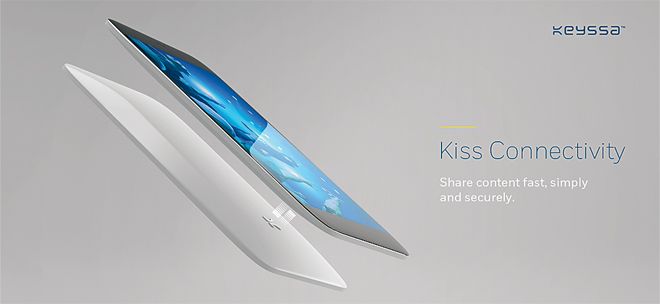
The appeal of Kiss extends beyond handheld gadgets. 'For home cinema, we see Kiss as a way of exchanging large uncompressed files very quickly,' says Venuti. 'The cloud is a wonderful thing but not the most efficient way to transfer. If you want big files available quickly you are going to have to do it some other way. Over-the-top [OTT] delivery is fine but it needs huge bandwidth and is very slow and costly, especially if people have data plans.
'Kiss would work for networking but we are focussed on high-speed, point-to-point, device-to- device. For instance there is interest, especially in Japan for the 2020 Olympics, in kiosks for downloading large files, for rental or distribution of movies.
'You would set your tablet or your cellphone down and transfer huge files, they could be 4K files, to the device. Then you take the device home and set it down on your set-top-box or PVR and download to that. Or you could stream to a projector. This technology is so new we don’t yet know how all this will unfold.'
All this begs the question: if Kiss is so wonderful, why hasn’t anyone else done it before? Venuti answers by explaining that tolerances are very tight. 'It’s like when we first launched HDMI. There was so many pains trying to get people to change their mentality from analogue to digital. Every new technology has a learning curve.'
Although Keyssa is cagey about details of how Kiss works, the company has filed over a dozen patents which anyone can read – if they know where to find them – to get a good insight into the problems that had to be solved.
Data rates available from 60GHz in the EHF (Extremely High Frequency) band can be literally a thousand times higher than for conventional wireless devices. But it’s only recently that advances in semiconductor circuit design have made EHF consumer chips affordable. They were previously used only by the military or for professional telecoms. But at EHF minor anomalies in the circuitry, such as impedance variations, corrupt the signal. EHF connections must operate at very low power, to avoid interference with the equipment they are connecting, so their reliable working range is only a few millimetres. Precision positioning of the mating chips, and their tiny waveguides and transmit-receive antennae, is vital. Everything is encapsulated in plastics to keep the components in place and clean.
One trick patented by Keyssa is to use magnets which attract and repel the two halves of a Kiss coupling, to ensure correct, snap-fit alignment. One illustration I've seen shows a cable with magnetic coupling, very similar to an Apple 32-pin plug.
So, when will we see working proof of Keyssa’s claims? Soon, apparently. The company heald demonstrations at CES and is planning a launch in Autumn. But, says Venuti: 'I’m not allowed to say what the devices will be.'
I asked the Keyssa VP if we may one day see HDMI and USB cables with magnetic couplers instead of plugs and sockets, and was told it's something the company envisions. He also played down any fears of it being a costly tech: 'We have done a lot of work to make it easy to manufacture. So it will be very inexpensive; a dollar or two on our side, at component level.'
And lastly, could Kiss replace HDMI?
'A connector never goes away, or it goes away very slowly,' says Venuti. 'It will be a slow, gradual descent. I think HDMI’s biggest threat is eventually OTT. Many large companies, the Intels and Qualcomms of this world, are talking about a wire-free world. Our technology goes hand to hand with wireless power. We see them on the same ascent. Once you get rid of the need for wires for data transfer and power, devices just don’t need wires any more.
'Although the consumer is very happy with one wire – with HDMI – we all know they much prefer zero wires.' He's probably right.
 |
Home Cinema Choice #351 is on sale now, featuring: Samsung S95D flagship OLED TV; Ascendo loudspeakers; Pioneer VSA-LX805 AV receiver; UST projector roundup; 2024’s summer movies; Conan 4K; and more
|




